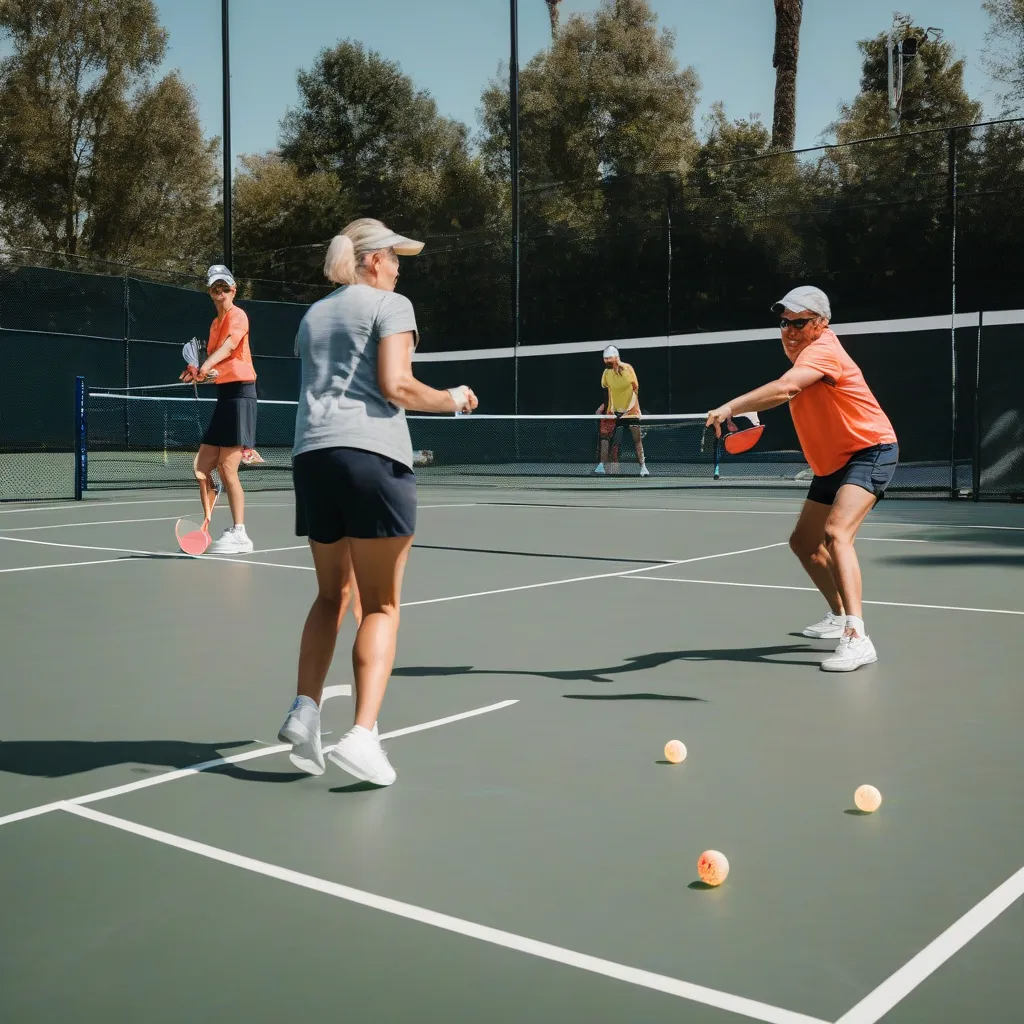Table of Contents
Introduction to Pickleball Training Tips
Pickleball is a fast-growing sport that combines elements of tennis, badminton, and table tennis. Whether you’re a beginner or an experienced player, continuous improvement is key to success. This guide covers the top 10 pickleball training tips to help you elevate your game and improve your skills, strategy, and overall performance on the court.
Why Training is Important in Pickleball
Consistent training offers several benefits for pickleball players:
- Skill Development: Regular practice helps you refine your techniques and develop new skills.
- Strategy: Training allows you to experiment with and perfect various strategies and tactics.
- Physical Fitness: Pickleball training improves your agility, endurance, and overall fitness.
- Confidence: Practicing regularly builds confidence in your abilities and enhances your performance during matches.
 Pickleball Training Drills
Pickleball Training Drills
Top 10 Pickleball Training Tips
1. Master the Basics
Focus on mastering the fundamental skills of pickleball, such as serving, dinking, volleying, and groundstrokes. Solid fundamentals provide a strong foundation for more advanced techniques.
2. Improve Your Footwork
Good footwork is essential for effective court coverage and shot execution. Practice drills that enhance your agility, balance, and quickness to improve your movement on the court.
3. Develop Consistent Serves
Work on developing a reliable and effective serve. Practice different types of serves, such as the drive serve and the lob serve, to keep your opponents guessing and gain an advantage at the start of each point.
4. Enhance Your Dinking Skills
Dinking is a crucial skill in pickleball, allowing you to control the pace and set up winning shots. Practice dinking consistently and accurately to maintain control during rallies.
5. Focus on Shot Placement
6. Work on Your Volley Game
Volleys are essential for maintaining an offensive position at the net. Practice both forehand and backhand volleys to improve your control and effectiveness during fast-paced exchanges.
7. Learn to Anticipate
Anticipation is key to reacting quickly and positioning yourself correctly. Pay attention to your opponent’s body language and shot patterns to anticipate their next move and prepare accordingly.
8. Develop a Strong Third Shot
The third shot is often a drop shot that sets up your approach to the net. Practice hitting precise third shots that land softly in the kitchen, allowing you to move forward and gain control of the point.
9. Practice Defensive Skills
Good defense can turn the tide of a match. Work on your ability to return difficult shots, block volleys, and reset the point to stay in the game even when under pressure.
10. Play with Different Partners
Playing with different partners exposes you to various styles and strategies. This experience helps you adapt to different playing conditions and improve your overall game.
Common Mistakes to Avoid in Pickleball Training
Avoid these common mistakes to make the most of your training sessions:
1. Neglecting Warm-Ups
Always warm up before training to prevent injuries and ensure your body is ready for intense activity. Incorporate dynamic stretches and light exercises to prepare your muscles and joints.
2. Overemphasizing Power
Focusing too much on power can lead to errors and inconsistency. Prioritize control and accuracy to improve your overall performance.
3. Ignoring Weaknesses
Identify and work on your weaknesses instead of only practicing your strengths. This balanced approach ensures comprehensive skill development.
4. Lack of Consistency
Consistency is key to improvement. Regular practice, even in small increments, is more effective than occasional intense sessions.
5. Skipping Cool-Downs
Cool down after training to aid recovery and reduce muscle soreness. Incorporate static stretches and gentle movements to help your body relax and recover.
Resources for Further Learning
For more detailed information on pickleball training tips, explore these valuable resources:
- Visit the USA Pickleball Association (USAPA) for comprehensive guides and tips.
- Explore instructional videos and articles on Pickleball Central.
- Check out detailed reviews and tutorials on Pickleball Portal.
- Learn from top players and coaches on PickleballMAX.
Conclusion
Effective training is essential for improving your pickleball skills and performance. By incorporating these top 10 pickleball training tips into your practice routine, you can elevate your game and achieve greater success on the court. Use this guide to enhance your training regimen, develop your skills, and become a more confident and capable player.
Frequently Asked Questions
- Why is training important in pickleball? Training is important because it helps you develop and refine your skills, improve your strategy, enhance your physical fitness, and build confidence on the court.
- How can I improve my pickleball skills? Improve your pickleball skills by practicing regularly, focusing on fundamental techniques, enhancing your footwork, and working on shot placement and consistency.
- What are common mistakes to avoid in pickleball training? Common mistakes include neglecting warm-ups, overemphasizing power, ignoring weaknesses, lack of consistency, and skipping cool-downs.
- Where can I find more information on pickleball training tips? Visit the USA Pickleball Association, Pickleball Central, Pickleball Portal, and PickleballMAX websites for comprehensive guides and tips.
- How do I create an effective pickleball training routine? Create an effective training routine by setting specific goals, incorporating a variety of drills, practicing regularly, and balancing intense sessions with rest and recovery.